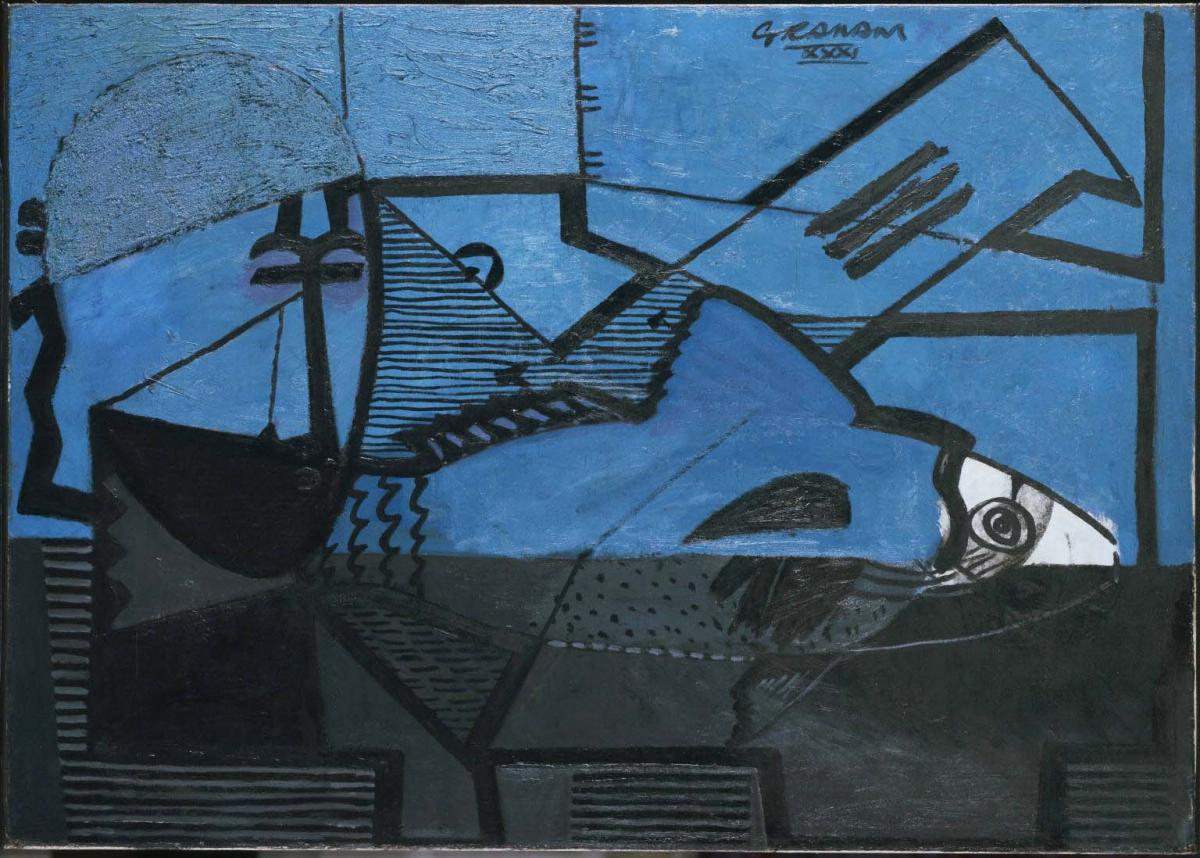Blue Still Life
John D. Graham ( 1931 )

In 1929, Duncan Phillips, who was the first to acquire John Graham’s work, wrote about Graham’s search for an abstract style in post-cubist inventions that have a mystical undercurrent with dynamic universal appeal. These concerns found mature expression in Blue Still Life, one of Graham’s most important works of the period. Graham knew he had arrived at a balance between compositional experimentation and enigmatic symbolism when he described it to Phillips as a “composition of form and design independent of composition of objects.”
The painting’s colors—two horizontal bands of blue and dark gray—are indeed independent of subject or form, and dark lines serve at times to outline objects or to divide the surface into geometric planes. Placed on a table are a head and a large fish. The fish’s head, painted a stark white, is the powerful focal point of the composition; otherwise, its form is simplified, lacking all definition in the dorsal fin, though faint lines are visible in the impastoed areas. The sculpture on the left resembles an African head that appeared in a photograph of Graham in his studio.
Around 1930, Graham, Arshile Gorky, and Stuart Davis began painting still lifes that explore the use of dark outlines, angular shapes, and flat surfaces. They were emulating Picasso, whose works they had seen in Cahiers d’Art. In spite of its obvious search for abstraction, however, Blue Still Life is more representational than similar efforts by Gorky or Davis. In his letter to Phillips in 1931, Graham deflected any comparison with Picasso, whom Graham saw as both a challenge and a threat: “While Picasso’s painting is analytical mine is synthetic; while his, from emotional manipulations slides into an intellectual statement, mine starts out with an intellectual concept and accumulates emotional values on the way to its realization.”